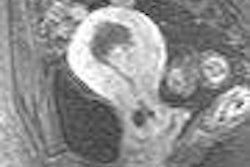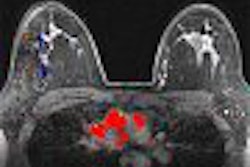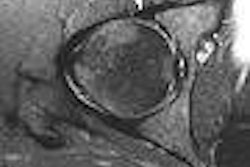In recent months there has been a great deal of inquiry about magnet room entrapment in MRI suite design and construction. These questions arise out of cryogen accidents and the ways in which MRI equipment manufacturers and shield vendors address the risks through the different cryogen safety designs they offer.
Assembling a complete picture of cryogen safety issues from these sources is equivalent to trying to put together pieces from three different puzzles into a single coherent image. While several magnet and shield vendors have developed strategies to minimize the risks of cryogen accidents, it is easy to apply these fragmented techniques incorrectly and defeat any safety benefit provided.
First, the background: When superconducting magnets quench, the cryogens undergo a dramatic thermal expansion and blast out of the cryogen vent pipe. If the vent or quench pipe fails, the expanding cryogens can fill and pressurize the magnet room and present a major threat to the safety of anyone in it.
Quenches are infrequent, and failures of quench pipes are even less frequent, but they have resulted in patient entrapment, injury, and even asphyxiation. MRI vendors now require emergency exhaust fans in magnet rooms, but the concern is that these fans won't be activated early enough to evacuate the plume of pressurized cryogen gas that can be released.
Liquid helium cryogen is roughly 500° Fahrenheit colder than room temperature. When a magnet quenches, the liquid helium boils off to its gaseous form and expands hundreds of times as it warms. This expansion, if it enters a magnet room that isn't provided with some form of relief, increases pressure within the room.
A concrete example of what this pressure increase can do may best be illustrated by a typical 4-foot-wide magnet room door, which has nearly 4,000 square inches of surface. A meager half-pound per square foot of increased pressure applies nearly a ton of pressure on the door. If the magnet room door swings into the room, this pressure will pin the door against the stops, making it impossible to open until the pressure is equalized. Despite the clear safety benefit of the alternate configuration, some vendors still show doors swinging into the magnet room even though new advances in radiofrequency (RF) shield door design have enabled out-swinging doors for years.
The training video "Safety in the MRI Suite: What You Need to Know," co-produced by Dr. Emanuel Kanal and GE Healthcare (Chalfont St. Giles, U.K.), has an excellent scene of an intentional quench (which doesn't breach into the magnet room) that demonstrates the near-explosive force of the cryogen vent. The video also has still photos showing the aftermath of a quench that did breach into a magnet room with an in-swinging door, trapping the patient inside, and the amount of damage that can be caused by the positive pressurization of the magnet room. It is because of these risks that Siemens Medical Solutions (Malvern, PA) is now showing out-swinging doors on its design templates, as now do most MRI vendors, and requires pressure-relief hatches for all new MR installations.
There are two different varieties of the most common hatches. The first option is the knockout panel that opens to allow the pressure of the expanding cryogen to vent outside the magnet room. This is essentially a solid panel within the RF shield that can be popped out of the surrounding shield wall assembly in the event of a quench breach. The second option is a waveguide grille through the RF shield to allow pressure to pass from the magnet room to an adjacent space. There are, however, major hurdles to overcome in the installation and operation of either.
First, the knockout panel: To be able to remove the panel, it needs to be somewhere where you can actually access the RF shield. Generally speaking, you want to have the RF shield protected at all times, so the suggested location for this is often in the computer equipment room adjacent to the penetration panel.
So, in a quench breach situation, the technologist is supposed to leave the console/window/phone/code button, enter the equipment room (unlocking it, if necessary), find the panel, uncover it, and remove it. All while there's a patient trapped inside?
What about installations that require passive steel shielding in addition to RF shielding? How does that alter the knockout panel? While the intentions behind the panel are laudable, there are significant problems with this application.
The second strategy involves waveguides installed in the RF ceiling assembly, usually interconnecting the volume of air in the magnet room with the plenum (the space above the ceiling but below the floor or roof above) to allow some of the pressure to dissipate. However, the potential volume of venting cryogen that can expand and create an entrapment risk is far more than can be absorbed by such a small additional volume of space.
Typically, the "parent wall" (the architectural wall, visible from the outside of the magnet room) is built all the way up to the underside of the floor above (or roof), sealing the room airtight. A waveguide in the RF ceiling often does not connect the magnet room to a large enough volume of space to effectively dissipate the pressure. Somehow, this pressure needs to be able to vent to a space far larger than the plenum above the magnet room to be effective.
In any installation, the location of emergency exhaust vents and pressure-relieving transfer grilles must be carefully planned and located. Putting these elements in the wrong location in the magnet room, or interconnecting with an inadequate or inappropriate area, may give you a false sense of security and, in some cases, actually increase risks to patients and staff.
What if the exhaust fan drew the cryogen vapor cloud between the magnet, where the patient is most likely located, and the door out? In that instance, the only means of escape from the magnet room is cut off by a cloud of supercold cryogenic gas.
Retrofitting pressure-relief knockout panels or waveguides in existing MRI suites is possible, although the architectural and RF shield modifications will require an interruption to patient scanning during the construction work. Facilities contemplating new magnet systems or expanded MRI facilities should plan on installing out-swinging magnet room doors, cryogen exhaust fans, as well as effective pressure-relief systems.
Cryogen safety, as with many areas of MRI suite design, is not regulated except for loose standards developed by the equipment vendors. Until MRI equipment and shield vendors agree on standard designs for cryogen safety protections, individual facilities will have to scrutinize the provided "typical" designs to determine the degree to which they mitigate cryogen hazards. By approving poorly planned cryogen safety features, facilities may be spending thousands of dollars buying nothing more than a false sense of security, or worse, increasing the risks to MRI patients and staff.
By Tobias Gilk
AuntMinnie.com contributing writer
April 19, 2006
Reprinted from www.mri-planning.com by permission of the authors. If you would like more information on any aspect of MR facility design or safety, please contact Robert Junk or Tobias Gilk at Jünk Architects.
Related Reading
When MRI throughput means more than revenue, April 11, 2006
ECRI's report on MRI safety, March 28, 2006
Doubling down: Raising the stakes of MRI patient safety, March 9, 2006
Ten questions patients should ask their MRI provider: Is this real or is it hype? February 15, 2006
MRI and cancer diagnosis, January 6, 2006
Copyright © 2006 Jünk Architects, PC



















